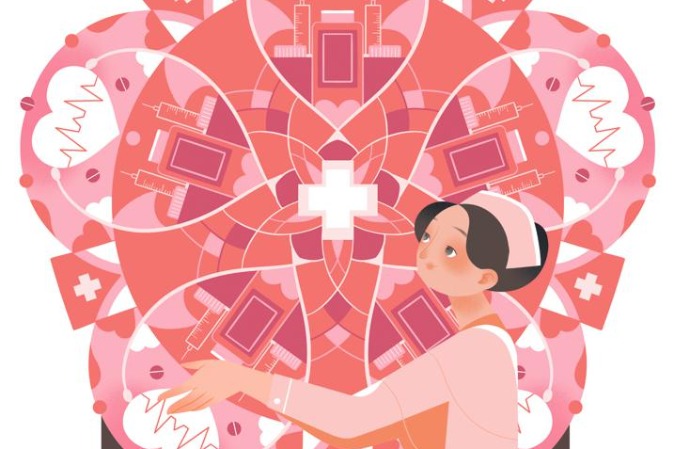Providing practical relief


Vision-to-practice gap in debt-for-development swaps needs to be bridged
Debt-for-development swaps have emerged as a vital debt management strategy since their inception during the Latin American debt crisis of the 1980s. In recent years, they have garnered substantial attention for their potential to revolutionize innovative development financing, foster collaborative development partnerships, and address pressing global issues, including climate change.
In recent years, low and middle-income countries have grappled with liquidity crises brought on by multiple factors such as the COVID-19 pandemic, geopolitical conflicts, food and energy crises, and consecutive interest rate hikes. Some nations have even resorted to temporarily suspending debt repayments and appealing for partial debt relief. In such a challenging context, innovative debt management solutions are urgently needed to break free from the debt impasse but in a way that does not trigger moral hazard.
From the debtor's perspective, debt-for-development swaps address the fundamental constraint of limited fiscal resources and foreign exchange reserves. Under the pressure of debt repayments and tightening liquidity, governments in debt-stricken countries are often compelled to allocate their finite fiscal resources toward servicing their debt rather than investing in public goods and services, such as education, healthcare and environmental protection, with uncertain economic returns and low cost-recovery rates.
Analysis conducted by the United Nations Global Crisis Response Group (GCRG) shows a staggering 3.3 billion people live in countries where government interest expenditures surpass allocations on education or healthcare. At least 19 developing nations find their interest payments exceeding education spending, while 45 nations allocate more resources to servicing debt than to healthcare. Continent-wide statistics show that in Africa, interest expenditures collectively surpass investments in education and healthcare, while in Asia and Oceania, developing nations (excluding China) divert more funds toward interest payments than healthcare spending.
Additionally, scholars and development aid organizations have brought attention to the "dual vulnerability" of developing countries, sometimes referred to as the "climate-finance trap". This term encapsulates the simultaneous existence of climate vulnerability and macroeconomic financial fragility, leading to a detrimental feedback loop. In the face of high interest costs and the pressure on foreign exchange reserves and liquidity stemming from concentrated debt maturities, climate-vulnerable nations find themselves unable to allocate sufficient fiscal resources for domestic climate resilience efforts. Consequently, they are more likely to confront the dual challenge of simultaneously servicing debt and funding disaster relief.
Debt-for-development swaps offer a twofold solution: extending preferential debt relief to debtor nations and permitting them to repay their debts by channeling their domestic currency into their domestic development accounts.
This alleviates the pressure on foreign exchange reserves, serves as a hedge against the escalating debt costs and interest expenditures caused by the interest rate hikes of major economies, and encourages debtors to direct their funds toward commercial and livelihood sectors that promise substantial long-term development benefits. In doing so, debt-for-development swaps help prevent shortsighted behavior.
Debt-for-development swaps have gained widespread attention, receiving not only endorsements from multilateral organizations such as the United Nations and the International Monetary Fund but also increasing recognition from debtor nation governments. The year 2023 bore witness to landmark debt-for-development swap transactions, including the world's largest deal (Ecuador's $1.6 billion debt-for-nature deal) and Africa's inaugural transaction (Gabon's $500 million deal). At COP28, several bilateral and multilateral development institutions, such as the European Investment Bank and the Inter-American Development Bank, announced their intentions to establish dedicated working groups to scale up the "debt-for-nature" mechanism. Countries such as Germany, Italy and Belgium also launched bilateral debt-for-development swap agreements with developing nations such as Egypt and Mozambique.
With China emerging as the largest bilateral creditor for certain developing nations, there has also been a growing discourse on the prospects of implementing debt-for-development swaps in China's debt management practices. In October 2023, during the third Belt and Road Forum for International Cooperation, the China International Development Cooperation Agency signed a memorandum of understanding on a debt-for-development swap with the Egyptian Ministry of International Cooperation.
Nevertheless, as international societies celebrate the rise of debt-for-development swaps, we must also recognize the lingering gap between its vision and practical implementation. The total amount of debt managed through debt-for-development swap mechanism, either since its inception or in individual transactions, remains limited. Debt-for-development swaps often require complex interdepartmental coordination, rendering their execution a relatively sluggish process. Despite the numerous transactions witnessed and China's pioneering role as an emerging bilateral creditor, debt-for-development swaps demand continued research to address how to manage the expectations while simultaneously enhancing their scale, efficiency and effectiveness. Several crucial aspects merit profound consideration:
"What to swap" pertains to the selection of the type of debt suitable for a swap and the mobilization of necessary transaction funds. Analyses citing data on public and publicly guaranteed debt volumes suggest that converting public debt at risk of default into financing for nature under debt swap model could yield substantial global benefits for ecosystem conservation. However, the choice of debt eligible for swap is a meticulous process, irrespective of whether the creditor is bilateral, multilateral or a private sector bondholder. The Houston Terms introduced by the Paris Club in 1990 have precisely defined the scope of debt conversion — 20 percent of the amount of official development assistance debt and non-assistance debt in arrears. Bilateral creditors typically employ debt conversion to manage their development assistance debt (eg, Germany, France, Italy and Spain) or official support for export credits (eg, Switzerland and the United States). The implementation of debt swaps is also significantly impacted by administrative processes, budget approvals and other practical steps. Germany, for instance, set an annual limit of 150 million euros ($163.4 million) for debt-for-development swaps in 2007. However, due to various constraints, only 124 million euros in conversion agreements were reached between 2015 and 2020. When it comes to clear classification, careful management, and case-by-case promotion, China and other bilateral creditors are fundamentally similar.
"Swap to what" involves the identification of areas, industries and entities suitable for collaborative projects that not only alleviate the debt burden but also generate foreign exchange and cash flow. These projects are vital for restoring macroeconomic resilience and debt repayment capacity in debtor nations, ultimately paving the way for them to regain a positive debt record and financing capability. Presently, the most discussed area for debt swap initiatives is nature conservation. For developing nations heavily reliant on ecosystem services and blessed with rich ecological diversity, this approach is effective. The global campaign against climate change further bolsters the potential of debt-for-nature swap to mobilize more funds. Conversely, there is also room to explore the integration of debt-for-development swaps with industrial investments and localized manufacturing. By leveraging local currency in such transactions to fund local procurement and employment, implementation and production in industries such as renewable energy, power transmission and distribution, medical equipment manufacturing and food processing can be accelerated. To answer these questions, in-depth country-specific research and industry-specific analysis are much needed, as well as forming partnership between decision-makers and policy researchers in debtor and creditor countries.
The author is a research associate at the Institute of International Development Cooperation at the Chinese Academy of International Trade and Economic Cooperation under the Ministry of Commerce of China. The author contributed this article to China Watch, a think tank powered by China Daily.
The views do not necessarily reflect those of China Daily.
Contact the editor at editor@chinawatch.cn


































